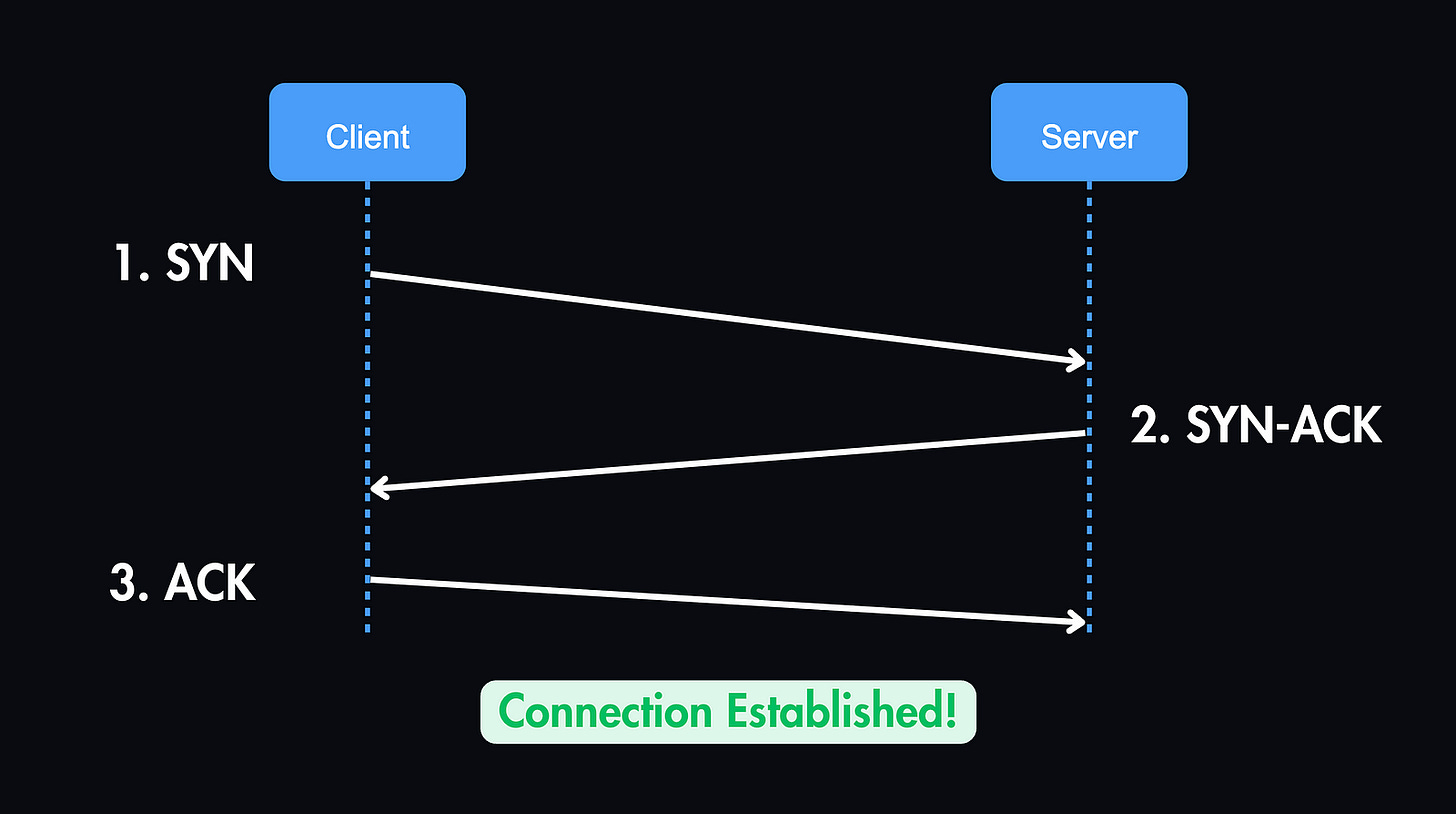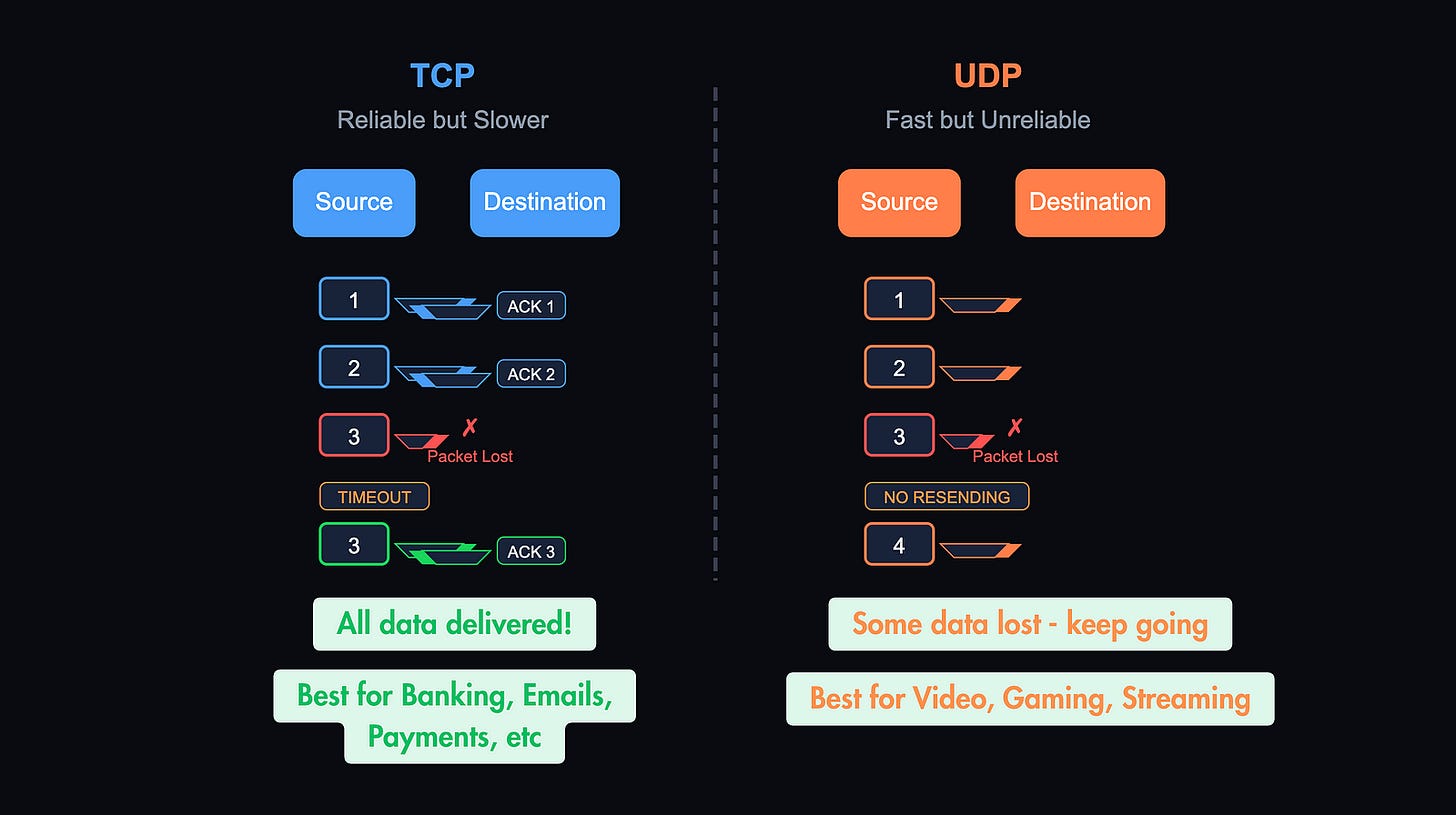Transport Layer Explained: TCP vs UDP
Most developers use APIs daily, but few think about how their requests actually travel across the internet. That journey is powered by two primary protocols: TCP and UDP.
These are transport layer protocols, and they decide how your data packets move from one machine to another. They’re the protocols behind every login, video stream, and API call.
Let’s break down what they do, how they differ, and when you’d use one over the other.
TCP: Reliable but Slower
TCP (Transmission Control Protocol) is like sending a package with a tracking number, delivery confirmation, and a signature required.
Here’s what makes it special:
✅ Guaranteed delivery: If a packet is lost or arrives out of order, TCP will re-send or re-order it.
🔒 Connection-based: Before sending data, it sets up a reliable channel with a 3-step handshake.
🐢 Slower, but safer: All that extra checking adds latency, but ensures your message gets through exactly as intended.
That’s why apps that deal with payments, logins, or sensitive data — like Stripe or Gmail — use TCP. You can’t afford to lose or scramble a packet when dealing with a financial transaction.
UDP: Fast but Unreliable
UDP (User Datagram Protocol) is the opposite. It’s more like tossing flyers onto doorsteps. Some will get through, some won’t, and that’s fine.
Here’s how it works:
⚡ No connection setup: It just sends packets, no handshakes involved.
🚫 No retries or ordering: If a packet is lost or arrives out of order, too bad. No correction.
🚀 Super fast: Because it skips the overhead of TCP, it’s much faster.
UDP is used in video calls, live streams, and online games — situations where speed matters more than perfection. If you’re watching Netflix, losing a few video frames is better than buffering.
TCP vs UDP: When to Choose What?
Let’s now understand when to choose which protocol by comparing their features.
TCP
Guaranteed delivery (retransmits lost packets)
Connection-based (uses a 3-step handshake)
Maintains packet order
Slower due to overhead
Used for APIs, payments, logins, anything sensitive
UDP
No delivery guarantees (packets may be lost)
Connectionless (no handshake)
Packets may arrive out of order
Very fast and lightweight
Used for video streaming, gaming, live calls
Most HTTP APIs run over TCP because they prioritize reliability. But in real-world system design, you’ll also use UDP where ultra-low latency is critical, like DNS queries or video conferencing.
Wondering how all these system design concepts actually work in real-world projects?
The fastest way I can show you is by building a real software system together.
Inside my mentorship program, we implement everything you hear about in theory, but rarely see in practice: load balancing, authentication, authorization, API best practices, CI/CD, caching, queues, monitoring, rate limiting, horizontal scaling, server security, deployments, and more.
👉 Apply here to join the Dev Mastery mentorship if you want to stop just learning and actually build it.







